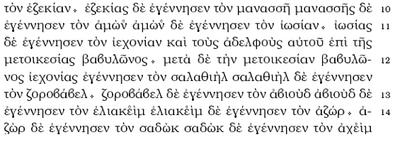It is time for some eye candy. Not that I don't take this book seriously, I do - but this is a tip off that the interest is visual. No wonder, the author is a graphic designer.
Saki Mafundikwa is
director of the Zimbabwe Institute of Vigital Arts, in Harare, Zimbabwe. He has written
Afrikan Alphabets: the story of writing in Afrika. Here is a
summary of a talk he gave to introduce his book. What attracted me to this book originally was this detailed and illustrated
synopsis of his book (don't miss this and be sure to *scroll down) which Mafundikwa posted on the
Ziva website in 2000.
"Due to the proliferation of the personal computer there is an explosion of typography design, young Afrikan designers can reach into their rich heritage and come up with a whole new typographic language. Designers from other cultures can also dig into this brand new bag that's been brought to the table for inspiration. It might seem like I keep talking about designers but the truth of the matter is that this book will benefit the general population since most people's conceptions of Afrika are formed and shaped by Hollywood (Tarzan et al) and the news media's fascination with reporting on Afrika only when there is negative news to report. "
Saki Mafundikwa.
Mafundikwa not only writes about the scripts of Afrika, but the Ziva website presents contemporary font designs of its students.
What intrigues me here is that I now realize there is a wide literature on writing systems from the point of view of their graphic design. The ethos of a university linguistics department insulated me from this world of thinking about scripts as graphic elements. Maybe it is just me ...
*I have to add that working with children, well, you know ... instead of scroll down I have heard children say "squirrel down". Isn't that a treat?
Addendum:
I found this comment from Konrad Tuchscherer, Aug. 2, 2003, in
Qalam, a forum about writing systems.
"The site (
http://www.ziva.org.zw/afrikan.htm) devoted to 'Afrikan' alphabets, apparently put together by a graphic designer, is unreliable (and not just for Kikakui). But this isn't strange, since there is a lot of material available on the www relating to African scripts, much of it wrong (even absurd).
I see the Vai syllabary listed, with date of origin given incorrectly as1883. The Vai script dates to 1832 or 1833. For the most recent information on the Vai script, see Konrad Tuchscherer and P.E.H. Hair,"Cherokee in West Africa: Examining the Origins of the Vai Script", _History in Africa_, Vol. 29 (2002), pp. 427-486. On page 440 is the earliest extant manuscript in the Vai script.The Mende Kikakui script dates to ca. 1917. I call it "Kikakui" because that is the only name Kikakui literates give it!
The Mende part is added so that people know the people/language I am referring to. It was devised by Mohammed Turay (born ca. 1850), an Islamic scholar, at a town called Maka (Barri Chiefdom, southern Sierra Leone). One of Turay's Koranic students was a young man named Kisimi Kamara. Kamara was the grandson of Turay's sister. Kamara also married Turay's daughter, Mariama. Turay devised a form of writing called 'Mende Abajada' (meaning 'Mende alphabet'), which was inspired in part by the Arabicabjad in part by the Vai syllabary.
Turay's 'Mende Abajada' was adjusted a bit (order of characters) by Kamara, and probably corresponds to the first 42 characters of the script, which is an abugida. Kamara developed the script further (with help from his brothers), adding more than 150 other syllabic characters. Kamara then popularized the script and gained quite a following as result -- which he used to help establish himself as one of the most important chiefs in southern Sierra Leone during his time (in several places I have read about 'Kisimi Kamara' the 'simple village tailor', which is absurd!)
Kikakui is still used today, but perhaps by less than 500 people. There is also an associated number writing system, which is entirely original (and, like the characters of the script, written from right to left).
I did research on Kikakui in Sierra Leone, on and off, from 1990-94 (first in the south, and after the 'war' started, in the east). The most complete study of Kikakui is: Konrad Tuchscherer, The Kikakui(Mende) Syllabary and Number Writing System: Descriptive, Historical andEthnographic Accounts of a West African Tradition of Writing (Ph.D.,University of London, 1996). Since that might be difficult to lay hands on, there is some good information on the history of the script in: Konrad Tuchscherer, "African Script and Scripure: The History of theKikakui (Mende) Writing System for Bible Translations", _AfricanLanguages and Cultures_ 8, 2 (1995), pp. 169-188."








